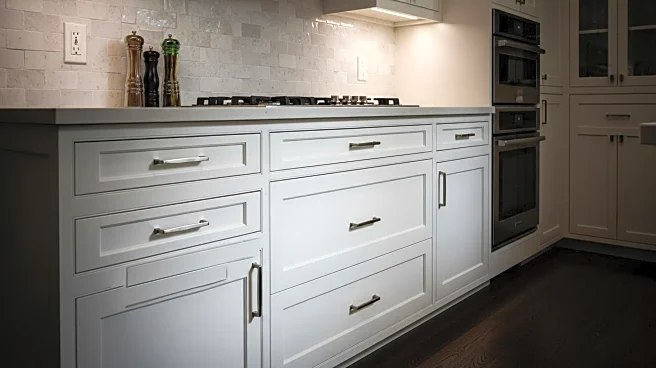What's Happening?
President Trump has enforced new tariffs on timber, furniture, and kitchen cabinets, effective immediately. The tariffs include a 10% duty on softwood lumber imports and a 25% tariff on upholstered furniture and kitchen cabinets, which will increase to 30% and 50% respectively on January 1. The White House states that these tariffs are intended to boost U.S. industries and protect national security. Canada, a major supplier of lumber to the U.S., will be significantly affected, with total levies on Canadian lumber reaching 45% due to existing duties. Other countries like Vietnam, Mexico, and China, which export furniture to the U.S., will also face challenges. Experts predict that these tariffs will increase construction costs, further complicating the housing market.
Why It's Important?
The tariffs are crucial as they are likely to raise construction costs, impacting homebuyers and the housing market. The move is part of President Trump's broader trade strategy to protect domestic industries and address perceived unfair trade practices. However, the increased costs may deter consumers from purchasing homes or undertaking renovations, potentially slowing down the housing market's recovery. The tariffs also strain trade relations with key partners like Canada, which could lead to retaliatory measures. Retailers may pass on the increased costs to consumers, leading to higher prices for imported goods.
What's Next?
As the tariffs take effect, stakeholders in the housing and retail sectors will need to navigate the increased costs and potential disruptions. Retailers may attempt to minimize price hikes ahead of the holiday season, but the long-term impact on consumer prices remains uncertain. The housing market may experience further challenges as construction costs rise, potentially leading to decreased demand. Industry groups and trade partners may seek negotiations or exemptions to mitigate the impact of these tariffs.
Beyond the Headlines
The tariffs highlight the ongoing trade tensions between the U.S. and its partners, particularly Canada, which has been involved in a long-standing dispute over lumber. The move also underscores the broader implications of protectionist trade policies, which can lead to increased costs for consumers and potential retaliatory measures from affected countries. The focus on national security as a justification for tariffs raises questions about the balance between economic interests and security concerns.












